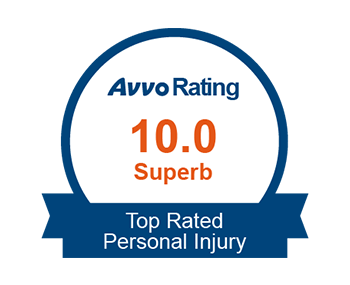Car accidents can be a terrifying experience, especially on the streets of New York, where the pace of life is fast, and the roads are always busy. When you find yourself involved in a car accident, your first priority should always be safety. However, once you have ensured that everyone involved is safe and have sought medical attention if necessary, it becomes crucial to document evidence at the scene. Properly documenting evidence at the scene of a car accident can significantly impact the outcome of any claims or legal proceedings that may follow. This guide will walk you through the steps you should take to gather and preserve the necessary evidence to support your case in New York.
Understanding the Importance of Documentation
In the aftermath of a car accident, emotions often run high, and it can be difficult to think clearly. However, the actions you take immediately following the incident can have long-lasting consequences. Documentation is crucial because it provides an accurate and detailed account of the accident, which can be used to establish fault, support insurance claims, and, if necessary, serve as evidence in court. Without proper documentation, it can be challenging to prove what happened, and this could result in a less favorable outcome for you.
Accidents in New York can be complex, with multiple factors contributing to the event. Whether it’s the weather conditions, road design, or the actions of other drivers, documenting these details can help build a strong case. The process of documentation should begin as soon as possible after the accident, while the details are still fresh in your mind and before any evidence is lost or altered.
Taking Photographs of the Scene
One of the most important steps in documenting evidence at the scene of a car accident is taking photographs. Visual evidence can be incredibly persuasive in demonstrating the severity of the accident, the damage to the vehicles, and the overall context of the scene. In New York, where traffic patterns and road conditions can change rapidly, capturing the scene as it was at the time of the accident is vital.
When taking photographs, it’s important to capture a wide range of images. Start by taking pictures of the entire scene from multiple angles. This will give a comprehensive view of the accident and its surroundings. Include images of the road, traffic signs, signals, and any nearby landmarks. These elements can provide context and help establish the exact location of the accident.
Next, focus on the vehicles involved. Take close-up shots of the damage to each vehicle, paying special attention to the areas of impact. It’s also helpful to photograph the license plates of all vehicles involved. If there are any skid marks or debris on the road, make sure to document these as well, as they can indicate how the accident occurred.
In addition to the vehicles and the scene, you should also take photographs of any visible injuries. While this may be uncomfortable, documenting injuries at the scene can be crucial for any personal injury claims that may arise later.
Collecting Contact Information and Statements
After ensuring that everyone is safe and while waiting for the authorities to arrive, it’s important to gather contact information from all parties involved in the accident. This includes the other drivers, passengers, and any witnesses who may have seen the accident occur. In New York, where there are often many people around, witnesses can provide valuable third-party accounts of the incident.
When collecting contact information, be sure to get the full names, addresses, phone numbers, and, if applicable, email addresses of everyone involved. It’s also important to exchange insurance information with the other drivers. Make a note of the insurance companies and policy numbers, as this will be needed when filing a claim.
If possible, try to get statements from any witnesses while the incident is still fresh in their minds. Ask them to describe what they saw and heard, and if they are willing, record their statements or write them down. Witness statements can be very helpful in corroborating your version of events and providing additional perspectives on the accident.
The team is very personable, patient and empathetic with their clients. They are upfront with you and will explain the entire process with you, they never lead you to believe otherwise, they tell you like it is and will not sell you a million dollar dream. Trust in Andrews, Bernstein & Maranto, PLLC, they work for you and he looks out for your best interest.” - Jane D.
Preserving Physical Evidence
In addition to photographic evidence and witness statements, it’s important to preserve any physical evidence from the scene. Physical evidence can include anything that was involved in the accident or that may have contributed to it. For example, if a part of the vehicle broke off during the collision, or if there is debris on the road, this should be collected and preserved.
If you are unable to collect the physical evidence yourself, make sure to inform the police or emergency responders at the scene. They may be able to collect and preserve the evidence for you. In some cases, it may be necessary to hire a professional to collect and analyze the evidence, particularly if there are questions about the mechanical functioning of the vehicles involved.
It’s also important to keep any documentation related to the accident, such as police reports, medical records, and repair estimates. These documents can provide additional evidence of the extent of the damage and injuries caused by the accident.
Notifying the Authorities and Filing a Report
In New York, it’s mandatory to report any car accident that results in injury, death, or significant property damage to the authorities. Even if the accident appears minor, it’s advisable to file a report with the police. The police report can serve as an official record of the accident and may include details that you were not able to capture yourself.
When the police arrive at the scene, be sure to provide them with all the information you have gathered, including your photographs, witness statements, and any physical evidence. The police will conduct their own investigation and create a report based on their findings. Be sure to ask for a copy of the police report, as this will be an important document for your records.
In addition to filing a police report, you may also need to report the accident to the New York Department of Motor Vehicles (DMV). If the accident resulted in injury, death, or property damage exceeding $1,000, you are required to file a Report of Motor Vehicle Accident with the DMV within 10 days of the incident. Failure to do so can result in penalties, including the suspension of your driver’s license.
Should I Take The First Settlement Offer? Steps to File a Personal Injury ClaimRelated Videos
Seeking Medical Attention
Even if you feel fine immediately after the accident, it’s important to seek medical attention as soon as possible. Some injuries, such as whiplash or internal bleeding, may not be immediately apparent and can worsen over time. By seeking medical attention, you not only ensure your own health and safety but also create a medical record that documents any injuries sustained in the accident.
When you see a doctor, be sure to describe all of your symptoms, no matter how minor they may seem. This will help your doctor provide the appropriate treatment and create a detailed record of your injuries. Keep all of your medical records, including doctor’s notes, test results, and bills, as these will be important evidence if you decide to pursue a personal injury claim.
Contacting Your Insurance Company
After documenting the scene and seeking medical attention, you should contact your insurance company to report the accident. In New York, which is a no-fault state, your own insurance company will typically cover your medical expenses and lost wages, regardless of who was at fault for the accident. However, if your injuries are severe or if the damage exceeds certain thresholds, you may be able to file a claim against the at-fault driver’s insurance.
When you contact your insurance company, provide them with all of the documentation you have collected, including photographs, witness statements, and medical records. Be honest and thorough in your description of the accident, but be careful not to admit fault or speculate about what caused the accident. Let the evidence speak for itself.
Your insurance company may send an adjuster to assess the damage to your vehicle and investigate the accident. Be sure to cooperate with their investigation, but remember that you have the right to have your own attorney present during any discussions.
Verdicts & Settlements
Understanding the Legal Implications
Documenting evidence at the scene of a car accident is not just about protecting your insurance claim. It’s also about protecting your legal rights. In New York, car accidents can lead to complex legal proceedings, especially if there are disputes about who was at fault or if there are significant injuries or damages involved.
If you are involved in a car accident, it’s important to understand your legal rights and responsibilities. New York’s no-fault insurance system means that your own insurance company will typically cover your medical expenses, but you may still have the right to pursue a personal injury claim against the at-fault driver if your injuries are severe.
Documenting evidence at the scene can help you establish fault and prove the extent of your damages. This can be crucial if you decide to pursue a personal injury claim or if you are sued by another party involved in the accident. By having thorough documentation, you can protect yourself and increase your chances of a favorable outcome.
Why Legal Representation is Important
Even if you have thoroughly documented the evidence at the scene, car accident cases in New York can be complex and challenging to navigate on your own. Insurance companies are often more concerned with their bottom line than with fairly compensating accident victims, and they may try to minimize or deny your claim.
This is why it’s important to have legal representation. An experienced attorney can help you navigate the legal process, negotiate with insurance companies, and represent you in court if necessary. They can also help you understand your rights and options, and ensure that you receive the compensation you deserve.
If you have been involved in a car accident in New York, documenting the evidence at the scene is the first step in protecting your rights. However, to ensure that your rights are fully protected, it’s important to seek legal representation as soon as possible.
At Andrews, Bernstein & Maranto, PLLC, we understand the challenges that car accident victims face. Our team is dedicated to helping you navigate the legal process and achieve the best possible outcome for your case. If you’ve been involved in a car accident in New York, don’t hesitate to contact us for a free consultation. Let us help you protect your rights and secure the compensation you deserve.














